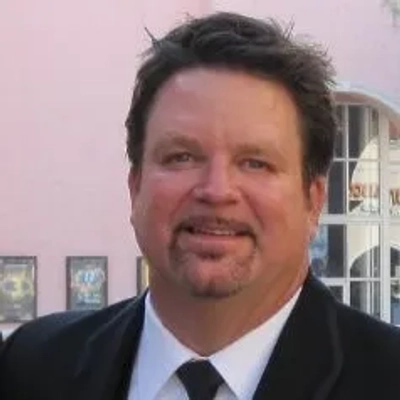12 Tips for Adapting Communication Styles to Different Contexts
Communication experts reveal practical strategies for adapting your message across professional environments, from coaching to cross-cultural exchanges. This comprehensive guide offers twelve actionable approaches to tailor your communication style for maximum effectiveness in any context. Discover how professionals across industries have transformed their results by mastering the art of audience-specific messaging.
Shifting from Directive to Coaching Communication
While working with a business coach to improve my leadership capabilities, I recognized the need to shift from my standard directive communication style to a more coaching-oriented approach. This transformation was particularly relevant when working with our media buying team, where team members often sought direct solutions to campaign optimization challenges. Instead of providing immediate answers, I learned to incorporate guided questioning techniques that prompted team members to develop their own problem-solving frameworks. The linguistic shift involved replacing statements like "you should adjust these targeting parameters" with thoughtful questions such as "what factors might be affecting our campaign performance?" This adjustment not only improved communication across different contexts but also fostered greater ownership and analytical thinking among team members regardless of their experience level.

Adapting Communication Across Cultural Contexts
During my time as a UX researcher working with global teams, I noticed I had been approaching all interactions through an American cultural lens that favored direct communication. This realization prompted me to adapt my communication style across different cultural contexts.
I observed that team members from various backgrounds expressed disagreement and provided feedback in significantly different ways than I was accustomed to. To bridge these differences, I made several adjustments to my communication approach. I became much more observant of non-verbal communication signals that often conveyed messages left unspoken. I incorporated more clarifying questions into our discussions to ensure mutual understanding. And when the situation called for it, I shifted to using less direct language with colleagues from cultures where such an approach was more appropriate and effective.
These adaptations helped create stronger working relationships and led to more productive collaboration across our international teams.

From Radical Honesty to Empathetic Feedback
When I worked at a hedge fund for my first job out of college, people spoke to each other and gave feedback in an incredibly direct way, really to a fault. It wasn't, "Hey, you have ketchup on your face." It was, "You idiot, you look terrible, how stupid do you have to be to get ketchup all over your face?!" The hedge fund encouraged this, and called it "radical honesty."
I was 22-years-old and blown away; was THIS how people spoke to each other in the "real" world?!
Needless to say... no, that isn't how coworkers talk to each other in 99.9% of businesses. So when I entered into another job, it took me several months to adjust to speaking to my team like they were human beings with feelings. My coworkers complained about how I spoke to them, but I honestly didn't think I was doing anything out of the ordinary.
One day, my CEO sat me down and asked me point blank, "Colin, did you enjoy working at the hedge fund?" I answered, "Oh no, I hated it." My CEO replied, "Good, because none of us want to work there either, so please stop acting like you're still there."
From there on out, I began to completely reshape how I approached coworker conversations, and I began to deliver feedback with empathy. A really amazing lesson I learned and continue to practice: ask someone's permission before delivering feedback, to make sure the person is ready and able to receive it. Total game changer!
Tailoring Technical Messages for Different Audiences
I had to completely change my communication style when pitching a product update to a group of engineers after pitching the same idea to investors. Investors responded to storytelling, market potential and vision — but engineers needed precision, logic and clarity in the technical framework.
Instead of speaking in metaphors or broad goals I switched to data-driven language — metrics, system diagrams and performance benchmarks. I stripped out adjectives and focused on verbs: optimize, automate, scale. Even sentence rhythm mattered; I used shorter, declarative statements to mirror how developers think and communicate.
It worked — the same idea that inspired emotional buy-in from investors inspired ownership from engineers. That taught me that effective communication isn't about being articulate; it's about being adaptable. The best message isn't the one that sounds good — it's the one that gets heard.

Same Brand Message With Two Delivery Methods
I delivered a presentation to investors during one week before conducting a workshop for women who experienced body image trauma during the following week. The brand message remained consistent yet the communication approach differed completely between these two events. I used investor meetings to present our vision and value proposition which explains how we turn emotions into products and how customers react to body-positive designs. I addressed the women in the same way I would address my sister. I avoided discussing strategy while expressing my feelings about fabric as a tool for forgiveness and silk as protective yet gentle material. The storytelling approach remains constant yet the delivery methods change based on the audience's needs.
Creating Supportive Language for Vulnerable Clients
When launching our company website, I recognized the need to adapt our communication style to resonate with individuals seeking therapy support who might be feeling vulnerable. Our team intentionally crafted language that speaks directly to the reader's emotional state, using supportive phrases like "If something's been sitting on your chest lately, you don't have to carry it alone." The linguistic adjustments included prioritizing a calm, clear, and supportive tone that acknowledges the emotional burden potential clients might be carrying. We deliberately avoided clinical or technical jargon that could create distance, instead opting for warm, accessible language that makes complex emotional topics approachable. This communication approach extends beyond our landing page to all our content, ensuring our company culture is consistently reflected in our external brand messaging across all touchpoints with clients.

Real Estate Negotiator Turns Radio Communicator
The biggest change in my communication style came when I moved from the real estate closing table to the radio broadcast studio.
In a negotiation, I speak to a small, highly-focused group. The language can be technical and dense because everyone in the room has a stake in understanding terms like 'escrow' or 'title contingency'. The context is specific and the goal is singular.
On my radio show, the audience is broad and often distracted. I have to earn their attention every few seconds. I learned to replace industry jargon with simple, direct questions. Instead of discussing 'debt-to-income ratios' I ask 'How much of your paycheck is already spent before you get it?'. I use sports analogies to make financial concepts stick. The language must build immediate trust and clarity with thousands, not just finalize a contract with a few.

Translating Structural Problems Into Financial Terms
The time I had to adapt my communication style was when I was required to present a complex structural repair plan to a board of directors for a major commercial building, instead of just the hands-on property manager. The context shifted entirely from direct, trade language to abstract, financial language.
The structural problem was a massive, expensive failure in a low-slope commercial roof. My normal audience is the foreman and the property manager, who communicate in hands-on terms like "flashing failure" and "joist rot." The board of directors only cared about "risk exposure" and "long-term asset value."
The linguistic adjustments I made were simple and structural: I replaced hands-on terms with financial terminology, while still anchoring the concepts to structural integrity.
I replaced "decking rot" with "unmitigated asset depreciation."
I replaced "improper flashing" with "high-liability structural risk point."
I replaced "cost of repair" with "mandatory investment in core asset longevity."
This worked because I maintained the hands-on structural truth but spoke in their financial dialect. I convinced the board by showing them that the repair wasn't an expense; it was a non-negotiable structural commitment to protecting the bottom line. The best communication is achieved by a person who is committed to a simple, hands-on solution that translates structural truth into the language of the listener.
Visual Dashboards Replace Technical SEO Reports
When we transformed our client reporting system, I had to completely rethink how we communicated complex SEO data. Our clients were getting lost in technical jargon and spreadsheets in our monthly email reports, so we built a visual dashboard system that presented the same information in a much more accessible way. I found myself shifting from writing detailed technical explanations to creating intuitive visual layouts and adding brief, plain-language context that executives without SEO backgrounds could understand at a glance. The feedback was immediate - clients who previously skimmed our reports began engaging with their data regularly, asking better questions, and making more informed decisions. This taught me that effective communication isn't about how much information you provide, but rather how you package it for your specific audience.

From Clinical Product Terms to Customer Experience
When we first developed our at-home waxing kits, our internal language was very clinical. We discussed polymer formulas, heating element efficiency, and specific application methods. This precision was necessary for engineering a great product, but it was completely wrong for the people who would actually use it. We were describing a piece of equipment, not a personal care experience.
To connect with our customers, we had to change our vocabulary. We replaced technical terms with words that described the result and the feeling. 'Optimal adhesion' became 'grips even the finest hairs'. 'Thermostatic control' became 'the perfect temperature every time, no guesswork'.
We focused on simple, reassuring language that promised a smooth, comfortable result. This change made our products feel accessible and trustworthy, which was essential for building our brand.

Uniting Finance and Mechanics Through Targeted Language
Adapting my "communication style to suit a different audience" is an operational necessity in our trade. My style must pivot immediately from the abstract language of finance to the concrete, technical language of the mechanic. The time I had to adapt communication required me to explain a complex, high-stakes inventory investment strategy to two completely different audiences simultaneously: our CFO and a team of veteran heavy duty trucks mechanics. Both needed to buy into the plan, but for radically different reasons.
I resolved this by strictly tailoring the linguistic focus to the operational reality of each group. For the CFO (the financial audience), I used the language of risk mitigation and liability. I spoke in terms of the financial exposure of high inventory and the return on capital certainty to prove the investment was financially sound. For the mechanics (the operational audience), I abandoned the financial language entirely and used the language of physical components and operational necessity. I spoke in terms of "guaranteeing the OEM Cummins Turbocharger is on the shelf," "eliminating the X15 actuator failure code," and the "structural integrity of the 12-month warranty."
The core adjustment was translating the single truth—investing in inventory stability—into the objective language that each audience relies on for their professional survival. This approach successfully unified the groups because it proved that the marketing and financial decisions were rooted in protecting the mechanic's ability to fix the asset.

Speaking Client Language Boosts Business Results
When I first started pitching SourcingXpro to Western eCommerce brands, my usual straight-to-the-point style from working with Shenzhen factories didn't land well. I talked numbers and lead times, but they wanted trust and clarity first. So I shifted. I dropped the heavy sourcing terms and spoke in their language—ROI, brand control, fulfillment flow. Instead of "MOQ 1000 units," I'd say, "enough inventory to test your first campaign safely." It wasn't about dumbing things down, it was about connecting better. Once I made that change, close rates jumped nearly 30 percent. Communication isn't just what you say, it's how you translate value into their world.





